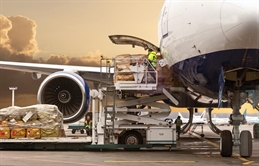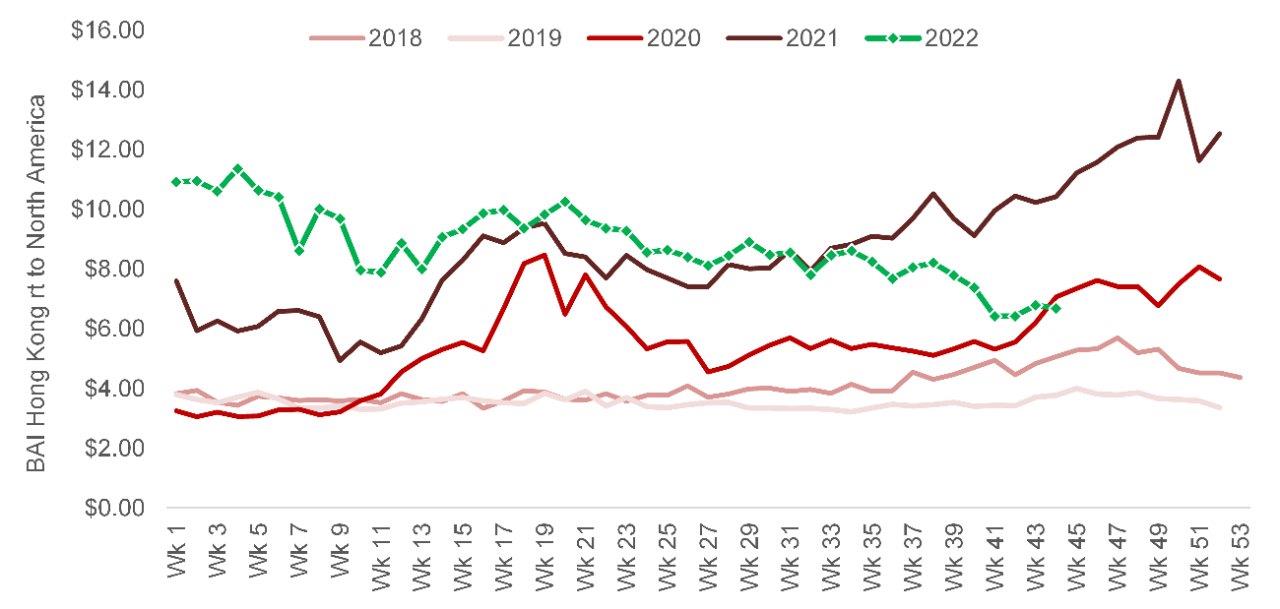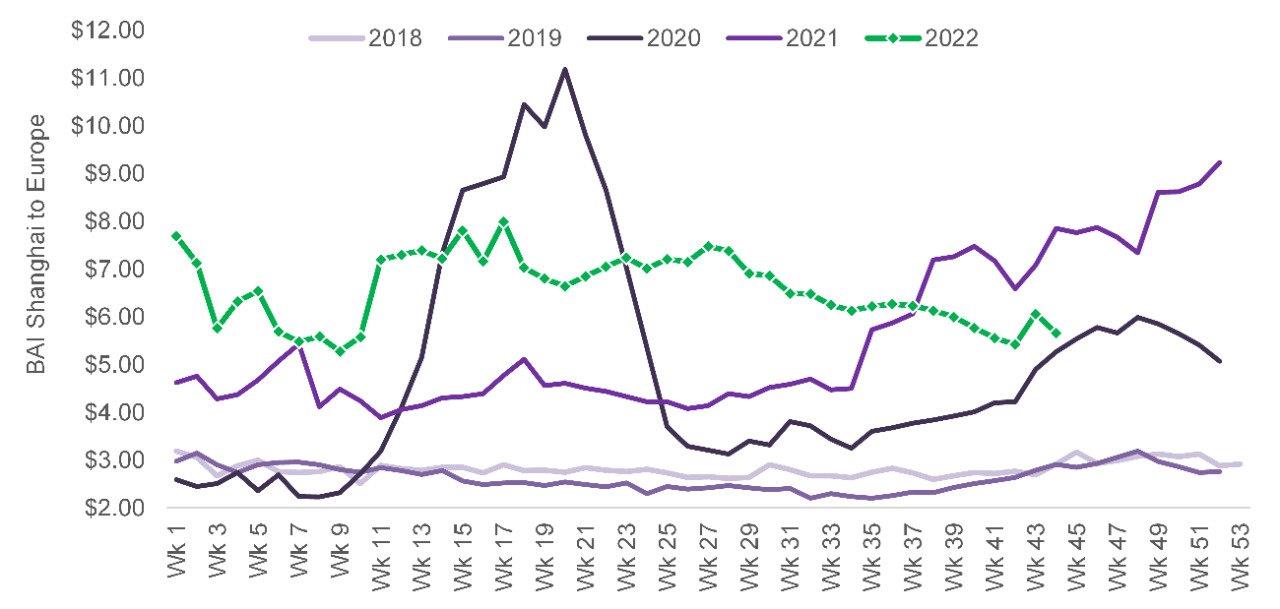
Air cargo rates continued to decline in October as capacity started to build up from passenger bellyhold and demand remained weak with the traditional peak season volumes yet to be seen this year.
Despite the drop in air freight rates, an analysis released by Baltic Exchange noted that there's still room for further deceleration as current market rates remain well above the levels seen before the Covid-19 pandemic.
Bruce Chan, director & senior analyst, global logistics & future mobility equity research, Stifel said October air cargo yields saw continued "sequential deceleration" from mid-year levels was "even faster than we expected."
In its November 7 report, Stifel noted that the rate from Shanghai to North America (BAI82) declined 13% from September, while Hong Kong to North America (BAI32) slid 15% relative to the same period.
Europe-destined lanes experienced similar but less pronounced trends, with Shanghai origin (BAI81) down 7.5% since September, and Hong Kong origin (BAI31) down 5%.
Prices continue to soften moving deeper into Q4
"At the outset of 3Q22, rates per kilogram crossed below 2021 levels, given an exceptionally strong 2021 peak season comparison and a discernable lack of peak this year," Chan said.
"As we move deeper into the fourth quarter, prices are softening still - crossing beneath 2020 peak season levels in some cases."

Source: BAI data, Stifel format
On a year-over-year basis, North America-destined lanes were down 41% and 32% from Shanghai (BAI82) and Hong Kong (BAI32), although they are still 1.8x and 1.6x the pre-pandemic average.
On Europe-destined lanes, rates were lower by 21% and 14% y/y from Shanghai (BAI81) and Hong Kong (BAI31), respectively, though still 2.1x and 1.9x above pre-pandemic.

Source: BAI data, Stifel format
The analyst attributed the decline in rates to the lack of peak season this year, softening in demand and increased capacity as more passenger flights restart service.
"There has been a conspicuous lack of peak season this year. We believe that is due in large part to a material pull forward in ordering as shippers - especially large, consumer-oriented shippers - sought to get ahead of supply chain backlogs and avoid the stock-outs of previous years," Chan said, adding that this behaviour seems evident in the rapid buildup in inventories earlier this year.
Chan added that improving the situation on the ocean side is also giving shippers more reason to revert back freight to ocean shipping.
"Trade down is not limited within airfreight service levels; clearing port congestion and more fluid overall supply chains are reducing the need for highly-elastic expedited modes and allowing shippers to convert back to cheaper ocean or overland options where practical and available," the analyst explained.
Rates expected to further decline
Moving forward, the report said rates have declined sequentially from mid-year, and in some cases, fallen below not just peaky 2021 levels, but also 2020 levels.
Still, they remain at multiples of pre-pandemic averages, so further normalization is likely, but it could be a bumpy path forward, in our view.
"If (as) fundamental macro trends continue to soften, we do expect further mean reversion in pricing. And while rates have already come down meaningfully, they're certainly not at recessionary levels," Chan said.
"They haven't even returned to pre-pandemic normal levels. So, there’s more potential downside," he added.



